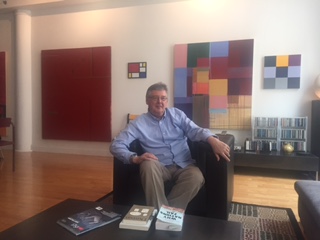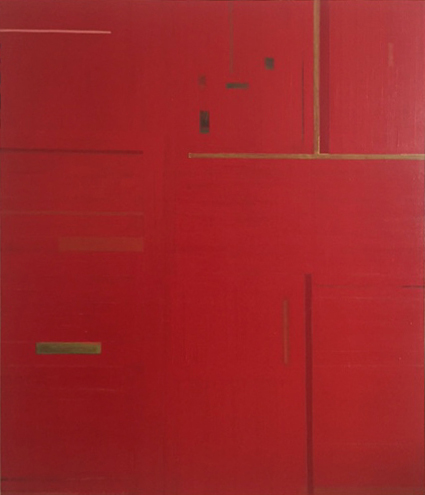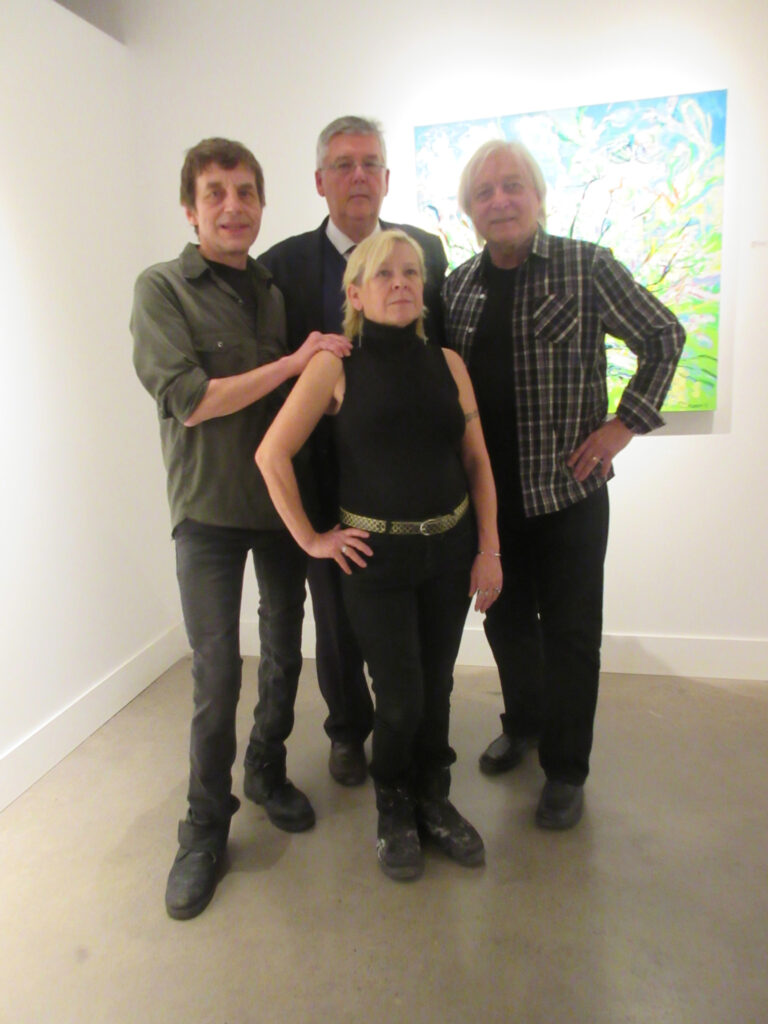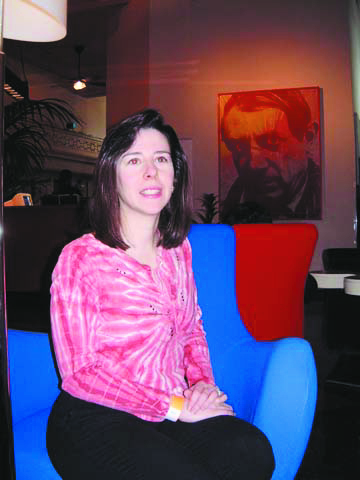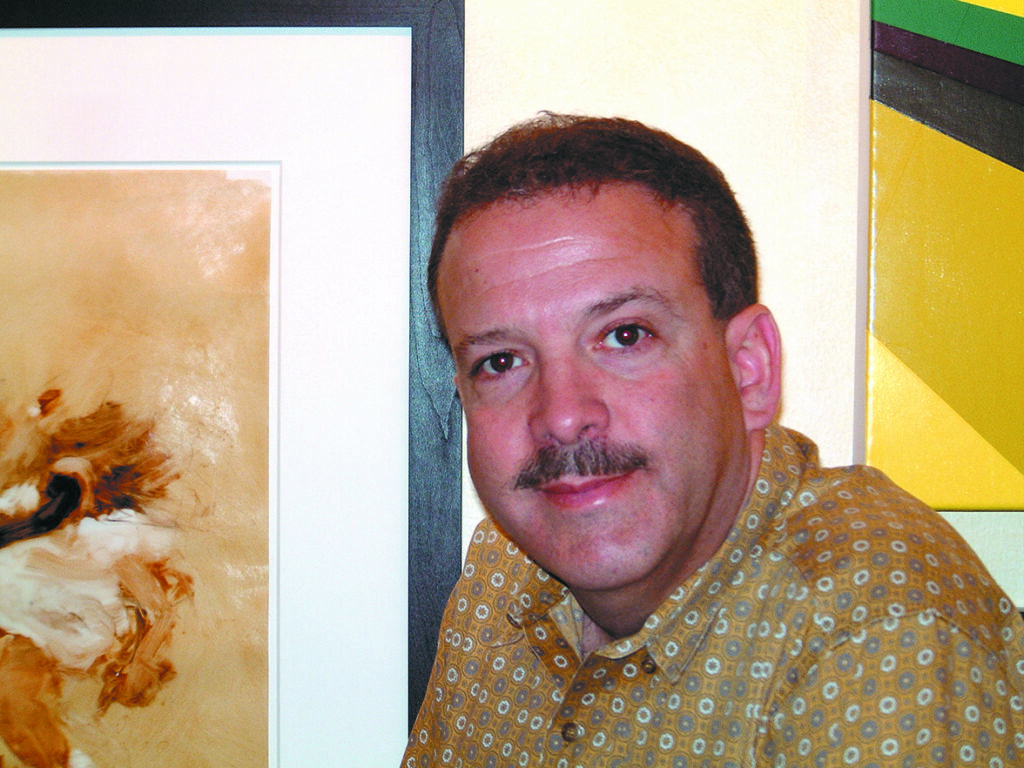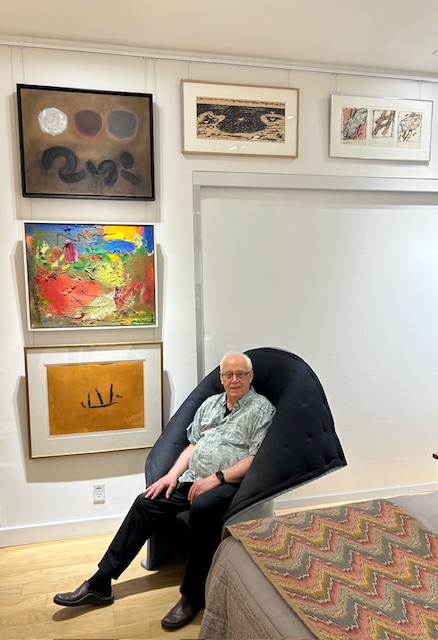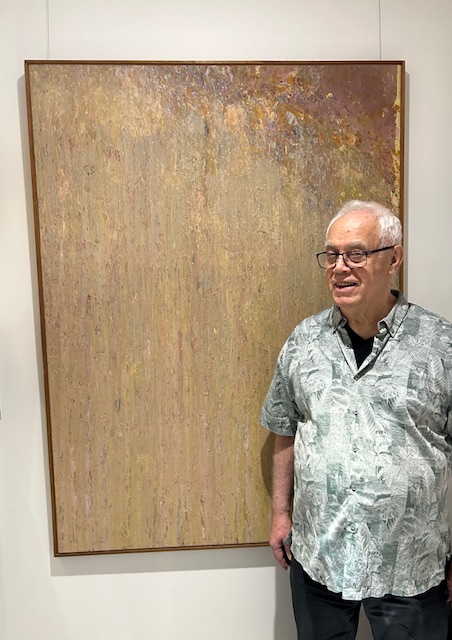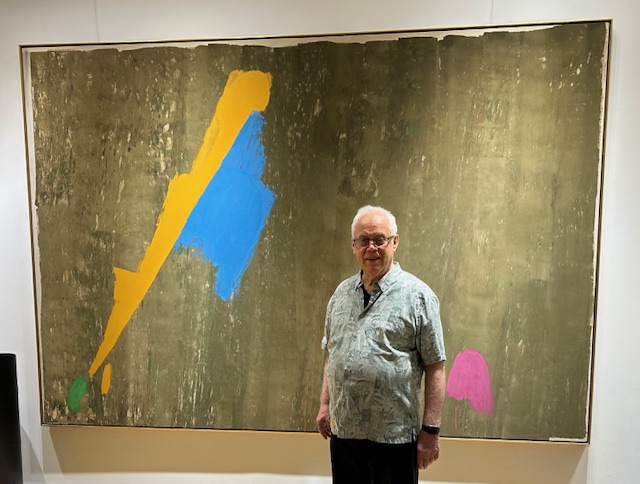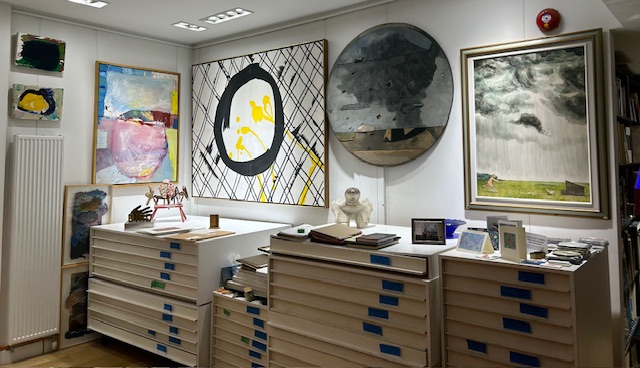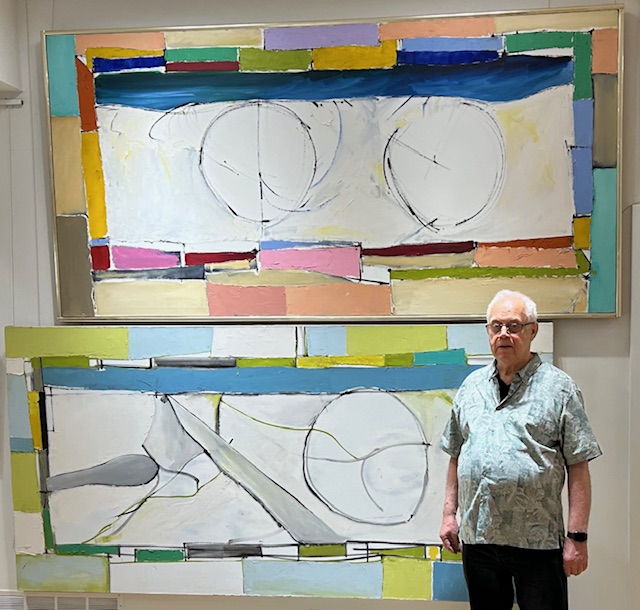by Roy Bernardi and Jennifer Leskiw
We had the good fortune of meeting Ed Nemeth and Nancy Parke-Taylor at a recent art opening for Steve Rockwell, the publisher of d’Art International magazine. Ed is a semi-retired pharmacologist and Nancy has currently retired from her career as a lawyer. After much chatting with Ed and Nancy, we discovered that these two lovely people had a fabulous collection of contemporary Canadian and American art. Lucky for us, we were invited to their home to see this wonderful and eclectic collection.
I must say, the house itself is a work of art, located on a beautiful street lined with large mature trees. Although the façade of the house is somewhat modern, its large open spaces are filled with paintings, photographs, sculpture, works on paper, and art books covering almost every subject one can imagine.
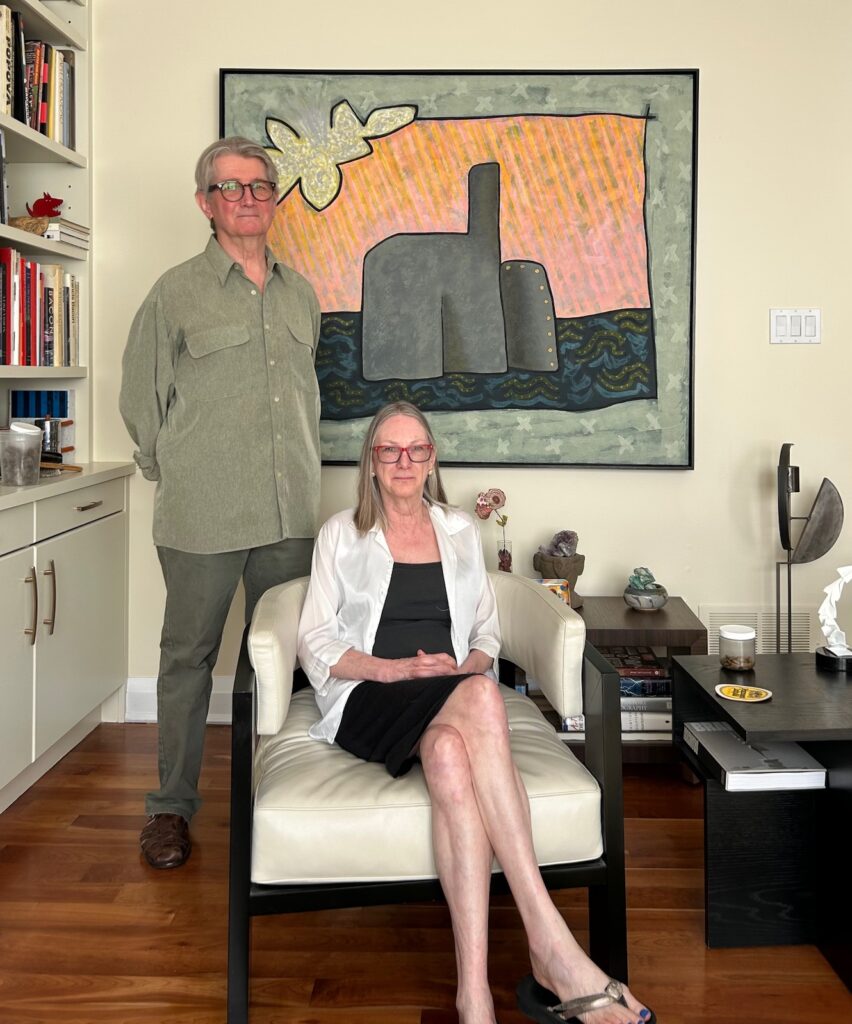
Upon entering the living room, your eye takes you to a beautiful painting by Toronto artist Tony Calzetta. It’s big and bold. Over the fireplace hangs an abstract by Toronto based artist Seo Eun Kim, who often goes by the name Sunny Kim. When viewed from afar, the surface of the painting resembles a needle point embroidery, when in fact, most of the surface is created by use of a baker’s piping bag.
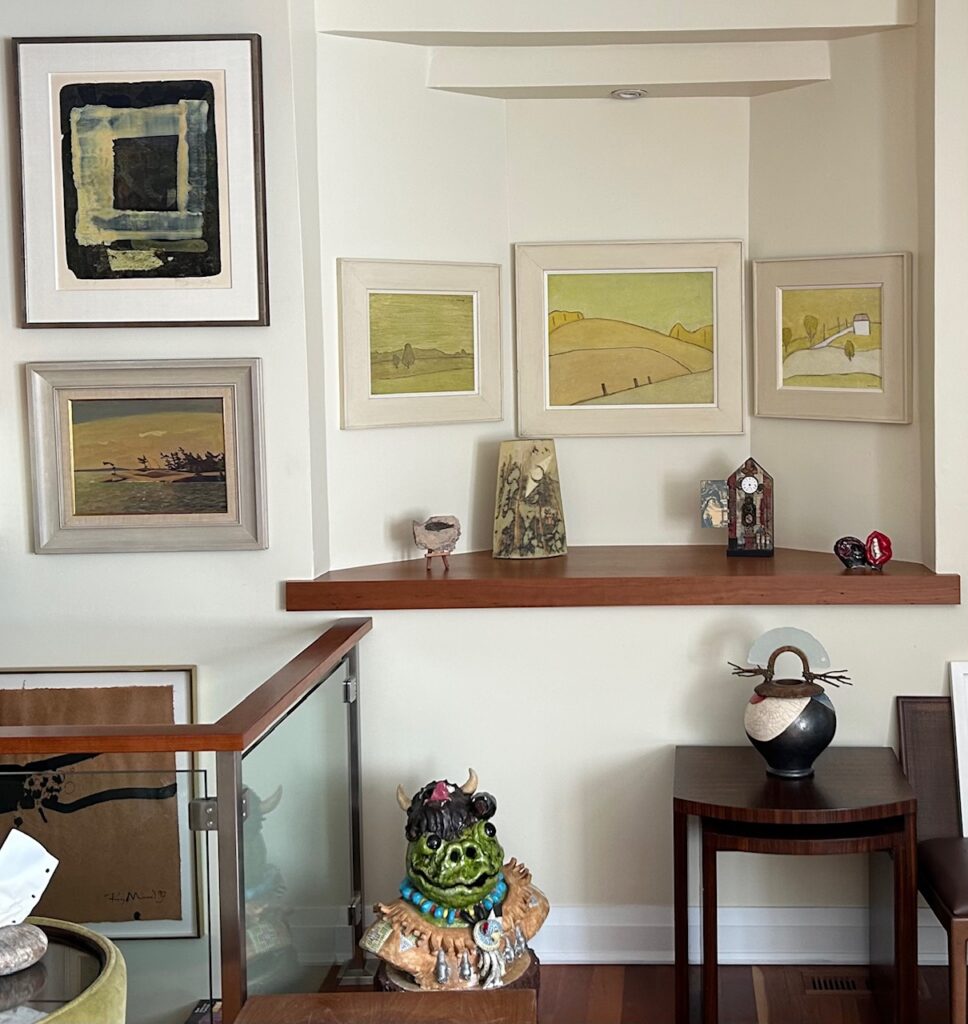
The opposite side of the room has three lovely landscapes by Barker Fairley. The trio is serene and peaceful. To the left hangs a wonderful Harold Town single autographic print and below a landscape by Charles Comfort. And below to the left of that, a lovely Ray Mead ink abstract. Directly below the Fairleys sits a very large and quirky ceramic sculpture by David James Gilhooly. It’s fantastic and the juxtaposition of these works is so much fun. Also scattered among the table tops are intriguing metal sculptures by Santa Fe sculptor Kevin Box. Some of the pieces bring to mind origami works due to their extreme thinness and fine detail.

Similar to numerous collectors, Ed and Nancy’s collection comprises various pieces by the same artist, reflecting different stages of the artist’s life. Their collection features multiple works by Barker Fairley, ranging from landscapes (as depicted) to several portraits. The same goes for several pieces by Tony Calzetta from various phases of his artistic journey. A significant portion of their collection showcases multiple works by the same artist, with some displayed together while others are dispersed throughout the house, each hanging alone or in clusters in different rooms.
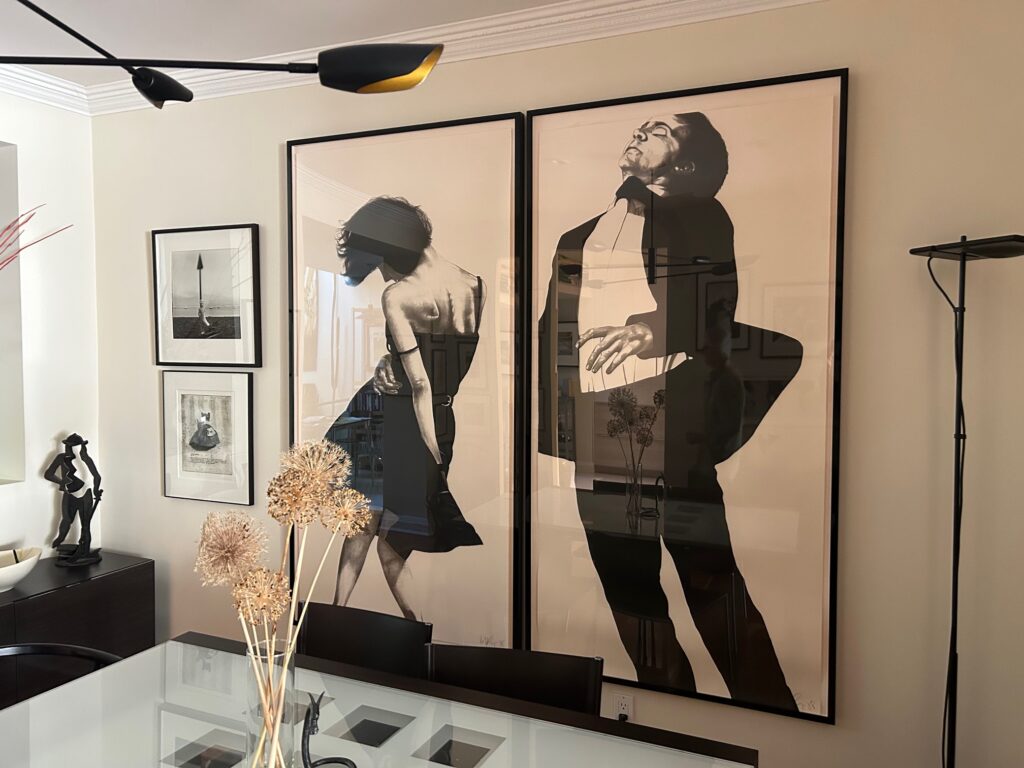
From here we stroll into the dining room where on one wall hangs two large scale black and white lithographs by American artist Robert Longo. The male and female are captured in a dance-like motion creating an amazing dynamism between the two.
The opposite walls are covered in a variety of black and white photographs of various individuals including two photographs by renowned photographer Sally Mann. Among this collection is one of a young girl who once adorned the cover of an issue of American Fiction magazine. There is one striking photograph by Alfred Eisenstaedt of Dr. Joseph Goebbels, Propaganda Minister of the German Third Reich. There’s a fascinating story behind this photo. After Eisenstaedt took the photograph, there was a knock on his door one evening. Fear engulfed him as he thought he would be arrested and taken away by the Gestapo but, to his surprise and complete relief, he was simply asked for a copy of the photograph for Dr. Goebbels’ personal collection.
As we leave the dining room, we walk through what I would consider a reading room filled with hundreds of art books and a fabulous Janet Cardiff abstract work of art. Such a unique piece as Cardiff is primarily known for her sound performance works and videos. Cardiff, along with George Bures Miller represented Canada at the 49th Venice Biennale in 2001. Truly an amazing find.
In this room hangs a number of photographs by Mark Hogancamp who works with toy figures, placing them in certain spaces and in certain positions in order to create a fictional city. Mark Hogancamp produced a book of his photographs titled “Welcome to Marwencol” which later became part of the idea behind the movie with Steve Carell, an American actor and comedian, called “Welcome to Marwen” released in 2018.
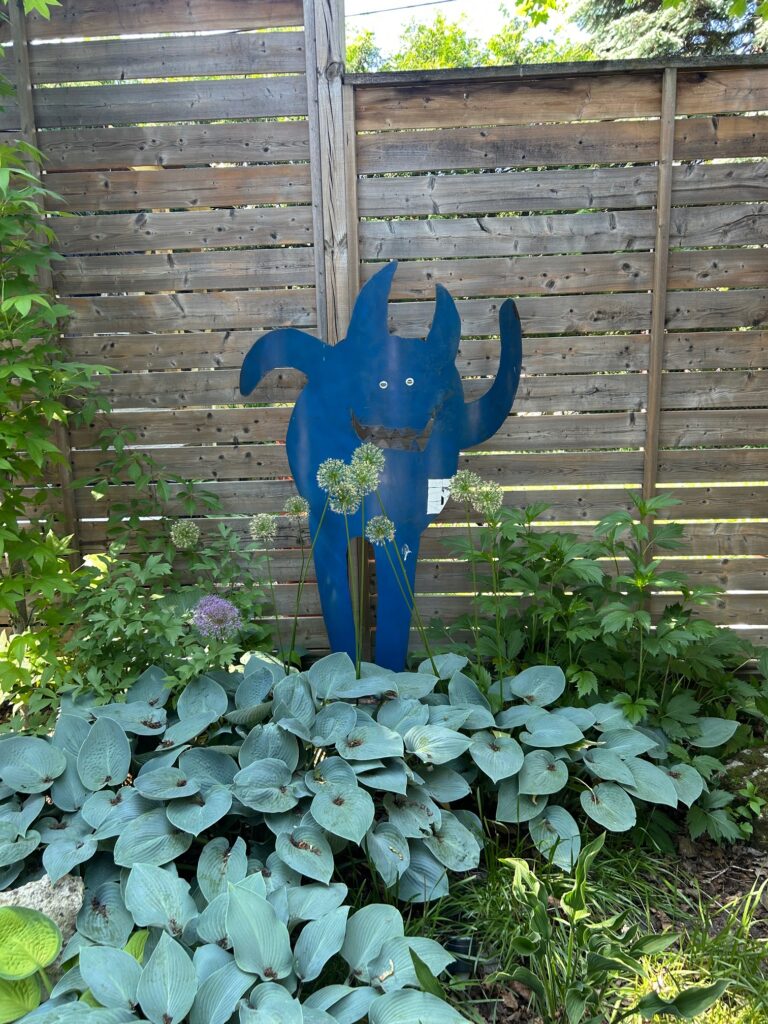
This room leads into the next which looks out into a well cared for garden. You’ll see a massive blue metal sculpture against the fence by Belgian artist Jean Pierre Schoss of Dog Bite Steel. His quirkiness and comedic appeal makes him look like a big, old friendly monster: he’s simply fabulous. Schoss uses recycled materials such as steel and creates fascinating creatures and animals. He feels the discarded material has a lot of character and always tells a life story. There are many smaller pieces scattered throughout this and other rooms. They’re very sweet and quite charming. But the outdoor monster is the best!
What is intriguing about their collection is that the arrangement of the works is perfectly curated. They appear to be positioned in a way that they all complement one another, reflecting similar themes, artistic styles, and colours harmonizing seamlessly.
What a treat it is to walk throughout the house and see works by Rita Letendre, Harold Town, Ray Mead, Barker Fairley, Robert Longo, Robert Chandler, Ian McKay, Katherine Bemrose, Steve Rockwell, Christopher Winter, Robert Marchessault, John Massey, Tim Deverell and Sally Mann, just to name a few.

